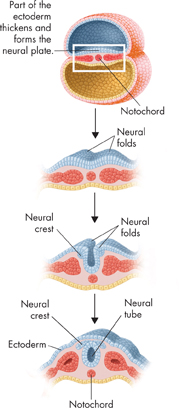
FIGURE 34–20 Gastrulation This stage results in the formation of three cell layers—the ectoderm, mesoderm, and endoderm. The three layers form all of the organs and tissues of the embryo.
ddGastrulation As development continues, the embryo begins a series of dramatic changes that will produce the key structures and tissue layers of the body.  Key events in early development include gastrulation, which produces the three cell layers of the embryo, and neurulation, which leads to the formation of the nervous system. The result of gastrulation (gas troo LAY shun) is the formation of three cell layers called the ectoderm, mesoderm, and endoderm. The ectoderm and endoderm form first. The mesoderm is produced by a process of cell migration shown in Figure 34–20.
Key events in early development include gastrulation, which produces the three cell layers of the embryo, and neurulation, which leads to the formation of the nervous system. The result of gastrulation (gas troo LAY shun) is the formation of three cell layers called the ectoderm, mesoderm, and endoderm. The ectoderm and endoderm form first. The mesoderm is produced by a process of cell migration shown in Figure 34–20.
The ectoderm will develop into the skin and the nervous system. Mesoderm cells differentiate and form many of the body's internal structures, including bones, muscle, blood cells, and gonads. Endoderm forms the linings of organs in the digestive system, such as the stomach and intestines, as well as in the respiratory and excretory systems.

FIGURE 34–21 Neurulation During neurulation, the ectoderm undergoes changes that lead to the formation of a neural tube that develops into the brain and spinal cord. Neural crest cells develop into many types of nerves.
dNeurulation Gastrulation is followed by another important step in development, neurulation (NUR uh lay shun). Neurulation, shown in Figure 34–21, is the first step in the development of the nervous system. Shortly after gastrulation is complete, a block of mesodermal tissue begins to differentiate into the notochord. Recall that all chordates possess a notochord at some stage of development. As the notochord develops, the ectoderm near the notochord thickens and forms the neural plate. The raised edges of the neural plate form neural folds and the neural crest. The neural folds gradually move together and form the neural tube, from which the spinal cord and brain will develop. Cells of the neural crest migrate to other locations and become types of nerve cells, skin pigment cells, and other structures such as the lower jaw.
If the neural tube does not close completely, a serious birth defect known as spina bifida can result. Studies show that folic acid (vitamin B9) can prevent most cases of spina bifida. Because neurulation usually occurs before a woman knows she's pregnant, folic acid is an important nutrient in any woman's diet.
 In Your Notebook Explain in your own words what occurs during neurulation.
In Your Notebook Explain in your own words what occurs during neurulation.
Table of Contents
- Formulas and Equations
- Applying Formulas and Equations
- Mean, Median, and Mode
- Estimation
- Using Measurements in Calculations
- Effects of Measurement Errors
- Accuracy
- Precision
- Comparing Accuracy and Precision
- Significant Figures
- Calculating With Significant Figures
- Scientific Notation
- Calculating With Scientific Notation
- Dimensional Analysis
- Applying Dimensional Analysis




